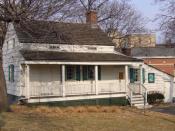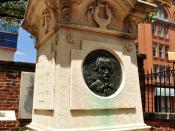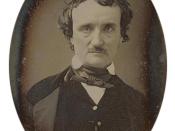In Edgar Allan Poe's "The Cast of Amontillado"ÃÂ, the story begins around "dusk, one evening during the supreme madness of the carnival season"ÃÂ (1146). This fun, lighthearted, and exciting atmosphere takes a quick turn when the location switches to the dark, "damp ground of the catacombs of the Montresors"ÃÂ (1147). This change in setting resembles Montresor's plot to kill Fortunato. Montresor's encounter with Fortunato is filled with warm greetings and hand shaking between the two. Montresor then uses Fortunato's weakness, which is being a connoisseurship in wine, to get Fortunato to follow Montresor to the dark catacombs under Montresor's palazzo, where Fortunato's death will take place. The dark and damp setting of the story identifies with Montresor's mindset. Montresor is very deep and dark. He "must not only punish, but punish with impunity"ÃÂ (1146). The reader can almost picture Montresor rubbing his hands together and smiling in a very devious manner as he gets away with murder.
The dark setting is very comparable to the plot and Montresor.
In Herman Melville's "Bartleby, the Scrivener,"ÃÂ the narrator's office location is described as having the windows open into a light shaft on one side, and on the other, the windows look out onto a brick wall "black by age and everlasting shade"ÃÂ (985). This "brick wall"ÃÂ is a symbol in many ways. It represents a dead end just like Bartleby's career. He does not want to acknowledge this fact, so he never leaves the office. If he did, he would see his life as black as the wall. Bartleby's sudden change of preference not to work shows immobility like the brick wall that stands alone. Even after the day is over and Bartleby is fired, "he remained standing mute and solitary in the middle of the otherwise deserted room"ÃÂ (1000).


